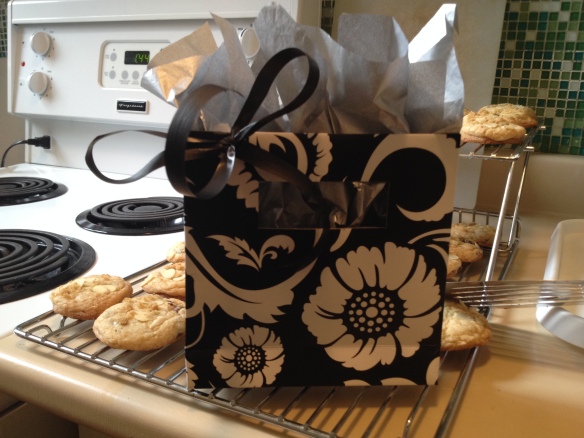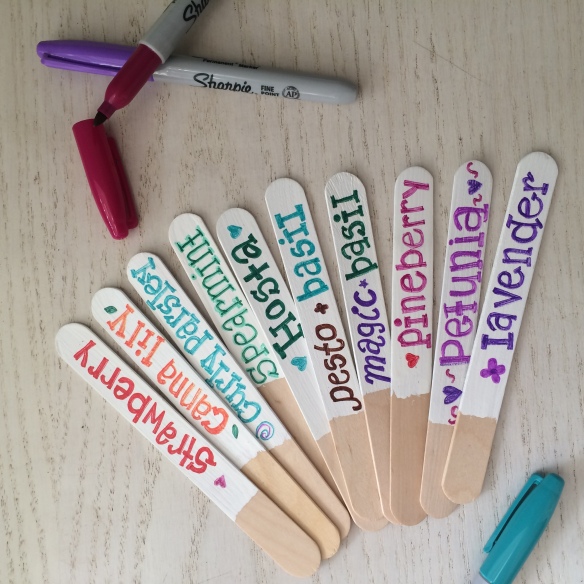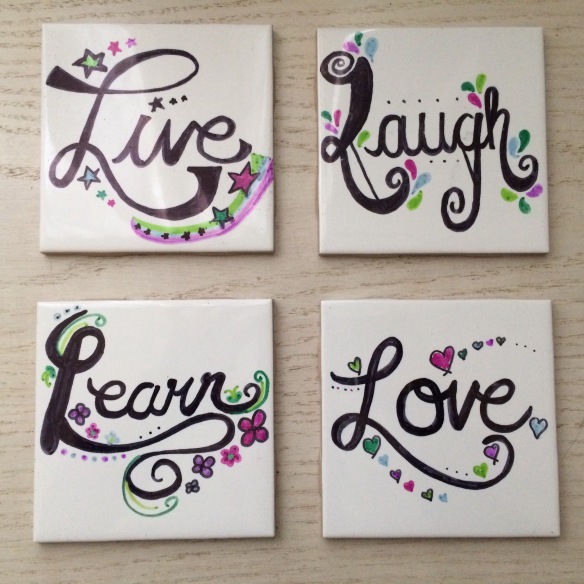My dad tells this story about a time when I was younger and my family was going through a rough patch financially. It was Christmastime and my dad was stressing out about making ends meet, let alone giving his young family a nice Christmas.
I must have caught wind of the situation somehow, because my dad describes me as suddenly becoming very busy in the days leading up to Christmas. I squirreled myself away in my room, only emerging occasionally to ask for art supplies. My parents had no idea what I was up to until Christmas Eve, when I proudly put all of my homemade gifts under the tree.
The story usually ends with my dad confessing that to this day he still owns the gift I made for him, a small plastic container covered in construction paper and glue, with a handmade label on the lid that says “paperclips”. (Spelled incorrectly, by the way. Also there’s a wiggly line that looks like a worm curling up in distress which I can only assume is a drawing of a paperclip.)
It’s his favorite gift of all time (or so he claims) and even though I’m a little bit biased, I have to agree- homemade gifts are some of the most meaningful to give and receive. They don’t necessarily require a whole lot of time, money or Martha’s crazy crafting skills. Here are some of my favorites that I’ve made and/or received over the years:

(1) I love baking so it’s not unusual to receive a gift of edible goodies from me around this time of year. If sweets aren’t your thing, other homemade goods that can be packaged up and stored also make great gifts, such as pasta sauce, snack mixes or homemade pickles. If you want to be super fancy, why not experiment with dried herbs, chilies and spices to make your own infused oils or vinaigrettes? (For baking ideas, click here. To go straight to my favorite Christmas cookie recipes, click here.)
(2) Maybe you’re not a baker yourself, but you know someone who appreciates baked goods all the same. Save yourself time and effort by gifting them a pre-packaged mix for cookies or scones, and top with a cute cookie cutter or mixing spoon. Dry soup mixes and specialty drink mixes also make great gifts, plus they’re easy to assemble in bulk for mass-giving. (For some suggestions, click here.)
(3) Not everyone has the ability, talent or time to sew, knit or crochet gifts for all of their friends at Christmas, but even the most novice of crafters can still pull off one of these easy scarf projects simply by using their fingers. You can always find time to work on projects like these while commuting or watching Netflix. (For other finger knitting projects, click here.)

(4) Crafts are always more fun when they’re a little personalized. Give the budding gardener in your life the supplies to make their own gardening labels like I did here using only tongue depressors and white outdoor paint. I used Sharpies on mine but paint pens or markers would probably work even better!

(5) I have a couple of artistic friends that take their cues from nature; you may recognize this little fairy door from Instagram that I received as a gift for my birthday a couple of summers ago. It’s made entirely of little twigs, pebbles, moss and other flora and fauna that can be found at your closest park.

Another friend of mine collected smooth stones from the river near her cottage and gave them her own touch with a coat of paint. She gave them out to friends and family members last Christmas, and mine sits on my desk as a paperweight. I love looking at it every day!

(6) If staying indoors is more your thing, there are all sorts of crafts that can be made using things around your home. For example, a neighbor had just finished tiling her back splash and was getting rid of a few leftover tiles. I snagged a few and turned them into coasters using my trusty Sharpies and a coat of epoxy to seal and protect it.
(7) Even if crafting isn’t your thing you can still give a purchased gift a homemade flair. A friend of mine buys chocolate bars in bulk and turns them into tasty bouquets as gifts. (Here’s some inspiration on how to wrap candy gifts.)
(8) Don’t forget the favorite animals in your life! Once my dog G brought her favorite dog biscuits for all her doggie friends to a human cookie exchange, which you can read all about here.
(9) Looking for a way to treat a run-down friend or family member? Homemade scrubs, masks, hair treatments and lotions can all be made in bulk and popped into pretty jars for a luxurious gift. Just make sure you take note of any skin or hair conditions or other allergies or sensitivities before you give. (Click here to find some recipes.)
(10) I love scented candles but I’m always stuck with the jars they come in after they’re done. As a last-minute craft idea for a kid’s birthday party I was hosting, I grabbed one of the jars and used a mixture of one part water and one part glue to decoupage tissue paper to the glass, making a stained glass effect. They were so festive I couldn’t resist making a couple more for Christmas, plus it’s a great way of re-purposing a small jar or candle holder that needs a facelift. (Click here for more candle gifts.)
Happy crafting!
B

Holiday celebrations can be fun, but only if you can ensure that things go smoothly. While there are never any guarantees when it comes to social gatherings, there are still plenty of ways to get your holiday game on. Click here to read more of them, or click here or here to read about some of the other best practices I’ve been trying to put into my place in my life.


 Want even more ideas on how to manage your time more efficiently? Hop on over to the
Want even more ideas on how to manage your time more efficiently? Hop on over to the 







